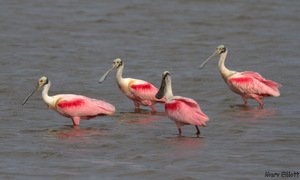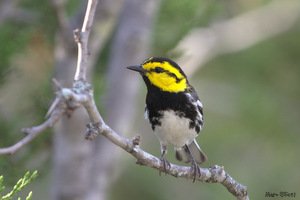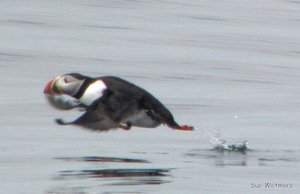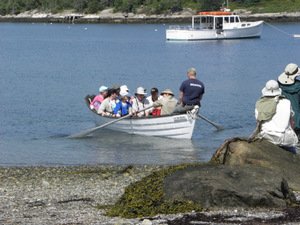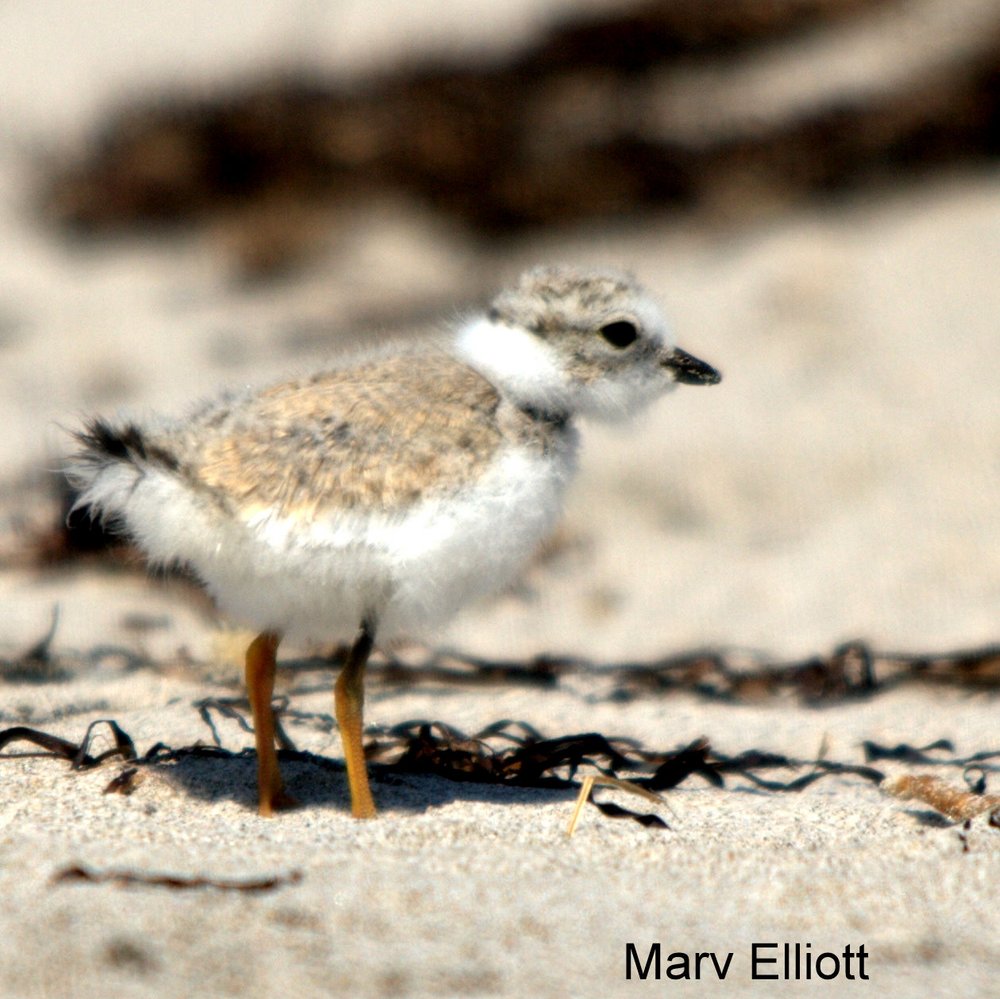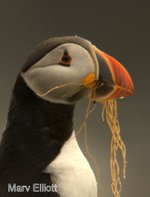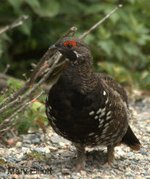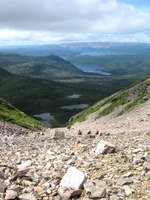 Hog Island – perhaps an unlovely name for a magical place, National Audubon’s camp on the coast near Bremen, Maine. A more delightful spot could not be found to spend a few days in June in the company of fellow birders and immersed in ornithology with some of the country’s top experts.
Hog Island – perhaps an unlovely name for a magical place, National Audubon’s camp on the coast near Bremen, Maine. A more delightful spot could not be found to spend a few days in June in the company of fellow birders and immersed in ornithology with some of the country’s top experts.
This year my husband Marv and I, along with friends Connie and Mark Youngstrom and Carol Ramsayer, attended the Field Ornithology session. Marv and I had attended the Joy of Birding session three years earlier and always knew we would return. Connie and Mark were new to Hog Island and Carol was also a repeat camper.
Hog Island is just a stone’s throw from the mainland. Most of us could probably swim the distance if we had to. But once on the island, you enter a different world where birds and conservation are always the focus in a setting infused with the Maine coastal culture. The history of Hog Island could fill another article. It includes ornithological luminaries such as Roger Tory Peterson and Allan Cruickshank. You can read more about that by clicking here.
 early morning bird recordingThe accommodations are rustic, but clean and comfortable. Not that you spend that much time in them. Every minute is packed. Some mornings begin around 4 a.m. for bird banding or bird sound recording - just about the time you hear the lobster boats going out. The long June days, punctuated with delicious meals, are filled with field trips and lectures and end with evening programs on a wide variety of topics. Should anyone be scared off by all this activity, it’s all optional so if you don’t feel up to something you can take a break. The Adirondack chairs placed around the lawn are awfully inviting.
early morning bird recordingThe accommodations are rustic, but clean and comfortable. Not that you spend that much time in them. Every minute is packed. Some mornings begin around 4 a.m. for bird banding or bird sound recording - just about the time you hear the lobster boats going out. The long June days, punctuated with delicious meals, are filled with field trips and lectures and end with evening programs on a wide variety of topics. Should anyone be scared off by all this activity, it’s all optional so if you don’t feel up to something you can take a break. The Adirondack chairs placed around the lawn are awfully inviting.
The very best part of Hog Island (and it really is hard to pick one) are the instructors and staff. Our camp director for the week was Scott Weidensaul. Anyone who has picked up a birding magazine or read a book on birding knows Scott. His vast knowledge of birds, nature in general, and his sense of humor set the tone for the week. The instructors do not gather together separately, but spread themselves among the campers during social hours and meals.
 bird banding with Scott WeidensaulInstructors for the week along with Scott included Kevin McGowan from the Cornell Lab of Ornithology; Sara Morris, Professor of Biology at Canisius College in Buffalo; Angelika Nelson, curator of the Borror Laboratory of Bioacoustics at Ohio State University; John Kricher, professor at Wheaton College in Massachusetts and author of A Neotropical Companion; Stephen Kress, director of the Seabird Restoration Program; and Anthony Hill, bird bander. The collective knowledge, experience, enthusiasm and humor of the instructors was unequaled.
bird banding with Scott WeidensaulInstructors for the week along with Scott included Kevin McGowan from the Cornell Lab of Ornithology; Sara Morris, Professor of Biology at Canisius College in Buffalo; Angelika Nelson, curator of the Borror Laboratory of Bioacoustics at Ohio State University; John Kricher, professor at Wheaton College in Massachusetts and author of A Neotropical Companion; Stephen Kress, director of the Seabird Restoration Program; and Anthony Hill, bird bander. The collective knowledge, experience, enthusiasm and humor of the instructors was unequaled.
None of Audubon camp would run smoothly without the Friends of Hog Island led by the very capable Juanita Roushdy. Under her guidance and tireless hard work, the staff and volunteers expertly run the camp.
Our four full days of camp were divided between seminars and field trips. The seminars were long enough to get a good dose of ornithological knowledge, but not long enough to get too antsy to explore the Maine coast. Field trips went to birding hotspots on the mainland including the beautiful Great Salt Bay Farm in Damariscotta. A boat trip to Eastern Egg Rock Island, home of the world’s first restored Atlantic Puffin colony, was another highlight with bald eagles, common eiders, a razorbill, terns and gulls seen along the way. And of course the puffins! The boat trip was especially meaningful after hearing Steven Kress talk about the Seabird Restoration Program on a prior evening.
 learning about birds with Kevin McGowanA word about the food: Hog Island could be considered a culinary destination. The chef, aided by an energetic group of assistants and volunteers, provided three healthy, flavorful meals a day with many of the ingredients locally sourced. The final dinner of the week is always special – lobster right out of Muscongus Bay, followed by cream puff puffins, as delicious as they are adorable.
learning about birds with Kevin McGowanA word about the food: Hog Island could be considered a culinary destination. The chef, aided by an energetic group of assistants and volunteers, provided three healthy, flavorful meals a day with many of the ingredients locally sourced. The final dinner of the week is always special – lobster right out of Muscongus Bay, followed by cream puff puffins, as delicious as they are adorable.
While we were at Field Ornithology this year’s artist-in-residence, Michael Boardman, was in residence. He welcomed visitors to the artist’s cottage he was inhabiting for two weeks and was happy to show us his work. One afternoon we had a sketching session with him. Let’s just say some of us were better than others! But it was fun and instructional.
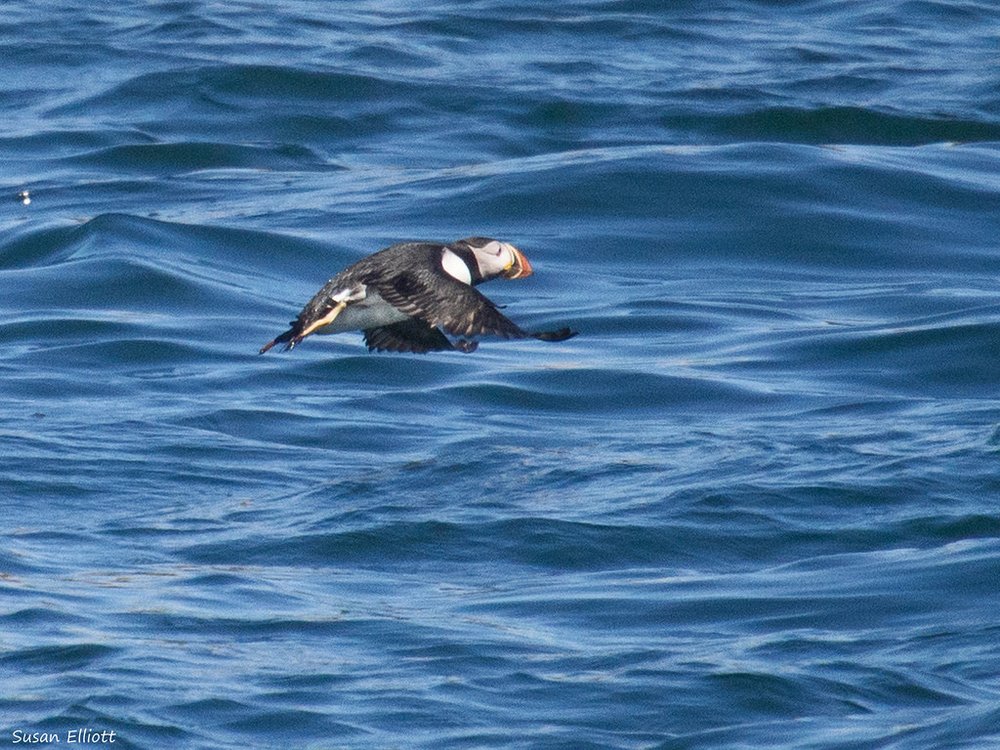 Atlantic PuffinThe Coastal Maine Bird Studies for Teens session was held concurrent with Field Ornithology. Although we attended different sessions and field trips, we shared our meals and evening programs. It was wonderful to see the enthusiasm and knowledge in the next generation of birders and ornithologists. Their presence did not detract, but indeed added to our enjoyment of the week. I have no doubt that in about 10 to 20 years’ time, we’ll be seeing their names pop up in the birding world, whether in leading field trips or publishing ornithological studies.
Atlantic PuffinThe Coastal Maine Bird Studies for Teens session was held concurrent with Field Ornithology. Although we attended different sessions and field trips, we shared our meals and evening programs. It was wonderful to see the enthusiasm and knowledge in the next generation of birders and ornithologists. Their presence did not detract, but indeed added to our enjoyment of the week. I have no doubt that in about 10 to 20 years’ time, we’ll be seeing their names pop up in the birding world, whether in leading field trips or publishing ornithological studies.
For anyone remotely thinking about Hog Island, my advice is to go if you can. It’s not inexpensive, but everything is included. Registration for all the Audubon sessions at Hog Island will open on October 18 and the sessions fill quickly. Birders of all skill levels are welcome. No matter your experience, whether you picked up binoculars yesterday or have birded the seven continents, you will gain something from Hog Island.
Board Member Marsha Booker attended Hog Island's Joy of Birding session a few years ago. Click here to read about her experience.
